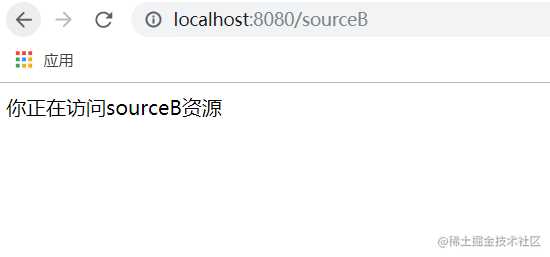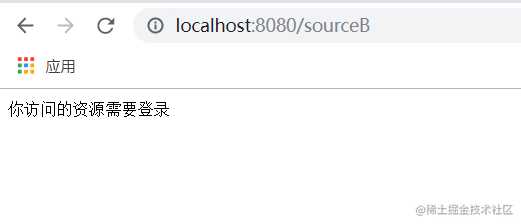Java自定义注解一般使用场景为:自定义注解+拦截器或者AOP,使用自定义注解来自己设计框架,使得代码看起来非常优雅。 本文将先从自定义注解的基础概念说起,然后开始实战,写小段代码实现自定义注解+拦截器,自定义注解+AOP。
一. 什么是注解(Annotation)
Java注解是什么,以下是引用自维基百科的内容
Java注解又称Java标注,是JDK5.0版本开始支持加入源代码的特殊语法元数据。
Java语言中的类、方法、变量、参数和包等都可以被标注。和Javadoc不同,Java标注可以通过反射获取标注内容。在编译器生成类文件时,标注可以被嵌入到字节码中。Java虚拟机可以保留标注内容,在运行时可以获取到标注内容。 当然它也支持自定义Java标注。
二. 注解体系图
元注解:java.lang.annotation中提供了元注解,可以使用这些注解来定义自己的注解。主要使用的是Target和Retention注解

注解处理类:既然上面定义了注解,那得有办法拿到我们定义的注解啊。
java.lang.reflect.AnnotationElement接口则提供了该功能。注解的处理是通过java反射来处理的。如下,反射相关的类Class, Method, Field都实现了AnnotationElement接口。


因此,只要我们通过反射拿到Class, Method, Field类,就能够通过getAnnotation(Class)拿到我们想要的注解并取值。
三. 常用元注解
Target:描述了注解修饰的对象范围,取值在java.lang.annotation.ElementType定义,常用的包括:
- METHOD:用于描述方法
- PACKAGE:用于描述包
- PARAMETER:用于描述方法变量
- TYPE:用于描述类、接口或enum类型
Retention: 表示注解保留时间长短。取值在java.lang.annotation.RetentionPolicy中,取值为:
- SOURCE:在源文件中有效,编译过程中会被忽略
- CLASS:随源文件一起编译在class文件中,运行时忽略
- RUNTIME:在运行时有效
只有定义为RetentionPolicy.RUNTIME时,我们才能通过注解反射获取到注解。 所以,假设我们要自定义一个注解,它用在字段上,并且可以通过反射获取到,功能是用来描述字段的长度和作用。可以定义如下,代码见我的GitHub 。
@Target(ElementType.FIELD) // 注解用于字段上
@Retention(RetentionPolicy.RUNTIME) // 保留到运行时,可通过注解获取
public @interface MyField {
String description();
int length();
}
四. 示例-反射获取注解
先定义一个注解:
@Target(ElementType.FIELD)
@Retention(RetentionPolicy.RUNTIME)
public @interface MyField {
String description();
int length();
}
通过反射获取注解
public class MyFieldTest {
//使用我们的自定义注解
@MyField(description = "用户名", length = 12)
private String username;
@Test
public void testMyField(){
// 获取类模板
Class c = MyFieldTest.class;
// 获取所有字段
for(Field f : c.getDeclaredFields()){
// 判断这个字段是否有MyField注解
if(f.isAnnotationPresent(MyField.class)){
MyField annotation = f.getAnnotation(MyField.class);
System.out.println("字段:[" + f.getName() + "], 描述:[" + annotation.description() + "], 长度:[" + annotation.length() +"]");
}
}
}
}
运行结果

应用场景一:自定义注解+拦截器 实现登录校验
接下来,我们使用springboot拦截器实现这样一个功能,如果方法上加了@LoginRequired,则提示用户该接口需要登录才能访问,否则不需要登录。 首先定义一个LoginRequired注解
@Target(ElementType.METHOD)
@Retention(RetentionPolicy.RUNTIME)
public @interface LoginRequired {
}
然后写两个简单的接口,访问sourceA,sourceB资源
@RestController
public class IndexController {
@GetMapping("/sourceA")
public String sourceA(){
return "你正在访问sourceA资源";
}
@GetMapping("/sourceB")
public String sourceB(){
return "你正在访问sourceB资源";
}
}
没添加拦截器之前成功访问

实现spring的HandlerInterceptor 类先实现拦截器,但不拦截,只是简单打印日志,如下:
public class SourceAccessInterceptor implements HandlerInterceptor {
@Override
public boolean preHandle(HttpServletRequest request, HttpServletResponse response, Object handler) throws Exception {
System.out.println("进入拦截器了");
return true;
}
@Override
public void postHandle(HttpServletRequest request, HttpServletResponse response, Object handler, ModelAndView modelAndView) throws Exception {
}
@Override
public void afterCompletion(HttpServletRequest request, HttpServletResponse response, Object handler, Exception ex) throws Exception {
}
}
实现spring类WebMvcConfigurer,创建配置类把拦截器添加到拦截器链中
@Configuration
public class InterceptorTrainConfigurer implements WebMvcConfigurer {
@Override
public void addInterceptors(InterceptorRegistry registry) {
registry.addInterceptor(new SourceAccessInterceptor()).addPathPatterns("/**");
}
}
拦截成功如下

在sourceB方法上添加我们的登录注解@LoginRequired
@RestController
public class IndexController {
@GetMapping("/sourceA")
public String sourceA(){
return "你正在访问sourceA资源";
}
@LoginRequired
@GetMapping("/sourceB")
public String sourceB(){
return "你正在访问sourceB资源";
}
}
简单实现登录拦截逻辑
@Override
public boolean preHandle(HttpServletRequest request, HttpServletResponse response, Object handler) throws Exception {
System.out.println("进入拦截器了");
// 反射获取方法上的LoginRequred注解
HandlerMethod handlerMethod = (HandlerMethod)handler;
LoginRequired loginRequired = handlerMethod.getMethod().getAnnotation(LoginRequired.class);
if(loginRequired == null){
return true;
}
// 有LoginRequired注解说明需要登录,提示用户登录
response.setContentType("application/json; charset=utf-8");
response.getWriter().print("你访问的资源需要登录");
return false;
}
运行成功,访问sourceB时需要登录了,访问sourceA则不用登录,完整代码见我的GitHub


应用场景二:自定义注解+AOP 实现日志打印
先导入切面需要的依赖包
<dependency>
<groupId>org.springframework.boot</groupId>
<artifactId>spring-boot-starter-aop</artifactId>
</dependency>
定义一个注解@MyLog
@Target(ElementType.METHOD)
@Retention(RetentionPolicy.RUNTIME)
public @interface MyLog {
}
定义一个切面类,见如下代码注释理解:
@Aspect // 1.表明这是一个切面类
@Component
public class MyLogAspect {
// 2. PointCut表示这是一个切点,@annotation表示这个切点切到一个注解上,后面带该注解的全类名
// 切面最主要的就是切点,所有的故事都围绕切点发生
// logPointCut()代表切点名称
@Pointcut("@annotation(me.zebin.demo.annotationdemo.aoplog.MyLog)")
public void logPointCut(){};
// 3. 环绕通知
@Around("logPointCut()")
public void logAround(ProceedingJoinPoint joinPoint){
// 获取方法名称
String methodName = joinPoint.getSignature().getName();
// 获取入参
Object[] param = joinPoint.getArgs();
StringBuilder sb = new StringBuilder();
for(Object o : param){
sb.append(o + "; ");
}
System.out.println("进入[" + methodName + "]方法,参数为:" + sb.toString());
// 继续执行方法
try {
joinPoint.proceed();
} catch (Throwable throwable) {
throwable.printStackTrace();
}
System.out.println(methodName + "方法执行结束");
}
}
在步骤二中的IndexController写一个sourceC进行测试,加上我们的自定义注解:
@MyLog
@GetMapping("/sourceC/{source_name}")
public String sourceC(@PathVariable("source_name") String sourceName){
return "你正在访问sourceC资源";
}
启动springboot web项目,输入访问地址


需要帮助或喜欢我的文章的小伙伴欢迎关注我的公众号“东瓜东瓜”哦,自己上微信搜一下,愿者上钩哈哈哈。
今天的文章Java 自定义注解及使用场景分享到此就结束了,感谢您的阅读。
版权声明:本文内容由互联网用户自发贡献,该文观点仅代表作者本人。本站仅提供信息存储空间服务,不拥有所有权,不承担相关法律责任。如发现本站有涉嫌侵权/违法违规的内容, 请发送邮件至 举报,一经查实,本站将立刻删除。
如需转载请保留出处:https://bianchenghao.cn/21619.html
